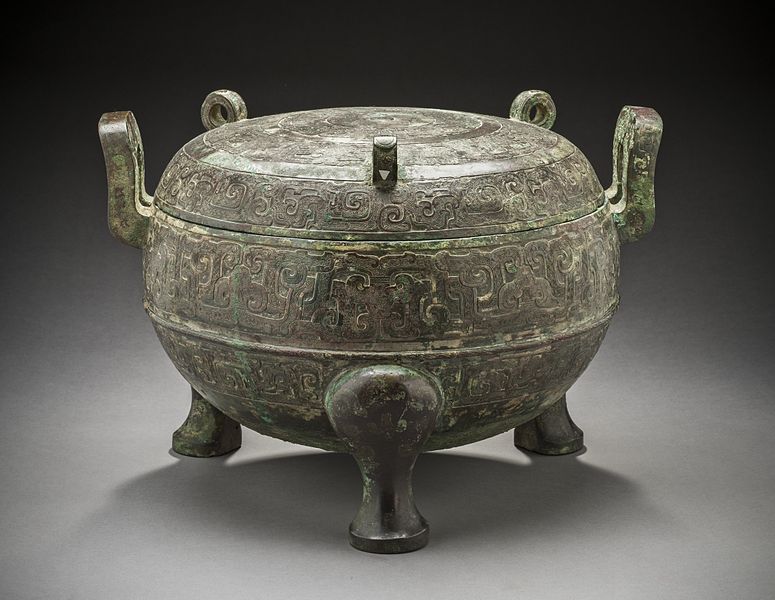Zhou Dynasty Chinese Ding
source: Wikimedia Commons
author: LACMA
Description
A photograph frames a large bronze cauldron, spotted with green patches. It stands on three legs and has two handles, one on either side, with which to be lifted. Its surface is covered with intricate decorative reliefs.
Date
Artifact: 500–450 BC
Photo: July 2013
Information
This Chinese ding is from the late Zhou Dynasty, likely crafted between 500 and 450 BC. In China’s early bronze age, ding were primarily use only for cooking and holding food or wine. Toward the end of this period, ding came to be a symbol of power and authority, and served more of a ritualistic purpose. Nobility and royalty would display these cauldrons as a symbol of their own authority or importance.
Chinese martial artists during the Warring States period (475 BC–221 BC) would sometimes compete in lifting these cauldrons, which could weigh up to several hundred pounds. As ding typically had two handles, either one or two men could attempt the lift.
Related Articles
Chinese Ding | History of Strength Training | Historical Strongmen and Weightlifters
[raw_html_snippet id=”bib”]
Chen, J., Xu, J., Fu, J., Chang, W. H., & Barrett, J. M. (2011). Along the Yangzi River: Regional culture of the Bronze Age from Hunan. New York: China Institute Gallery.
Defoort, C., & Standaert, N. (2013). The Mozi as an evolving text: Different voices in early Chinese thought. BRILL.
Fong, W., Bagley, R. W., So, J. F., & Hearn, M. K. (1980). The great bronze age of China: An exhibition from the People’s Republic of China. New York: Metropolitan Museum of Art.
[raw_html_snippet id=”endbib”]
META
